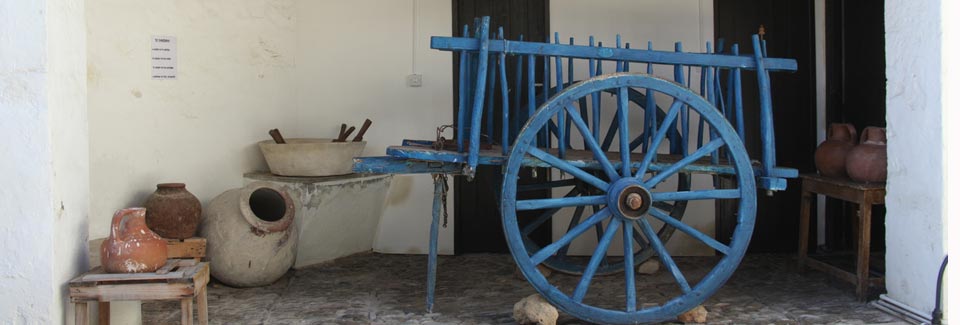
Our History
Ethnography: from the Greek – ethnos- meaning the elements of history, customs, habits, heritage, in one word -culture.
This is a vision which became a reality in the summer of 1958 when the founder and archaeologist George S Eliades opened the doors of his museum to the public.
The accumulated works on display amounted to a collection which had been gathered over a period of twenty years and during that time George Eliades started to form his dream to create a home in order to house the creations of folk artists.
His diligent archaeological studies had unearthed many local treasures and these were lovingly excavated then, carefully transported to await the day when they could be brought to life and so participate in the story of the Cypriot people’.
The collections are firmly anchored in Eliades profound enthusiasm coupled with the discipline of anthropology and his comprehensive study of the Cypriot people and their society.
Museums are not just about objects, they are about the cultures that produce them, and these collections provide an outstanding resource through which to understand and value a society and we are then able to explain it to others.
There are stories here of what it means to be human, stories that come alive as visitors view the many exhibits which were created and used by anonymous men and women from a bygone age. Cabinets of curiosities literally bursting with examples of ancient axe heads, tools, fossils, coins, ceramics, glass, and a marvellous collection of hand crafted silver items.
The Ethnographical museum of Paphos is actually a living place, giving us an insight into the lives of Cypriots from the ancient period three thousand B.C until today.
The entire collection is housed in a unique old stone building, there is very special character to the building which consists of two floors; visitors enter through grand gothic style arches, and the floors are connected by stairs both outside and also inside, allowing easy separation of both home life and the display areas.
The Eliades family grew up in this lovely, rather elegant abode and one must envy the curators children who were privileged to play and study when surrounded by such a collection of fascinating artefacts.
They may well have been able to peek over the staircase and watch as their father greeted ex kings of Europe, and Prime Ministers, scholars from all over the world, visiting professors, and members of the clergy who, in turn would have also met the many artists and writers who visited the museum.
We are open to the Public in many different ways.
The material catalogued within the museum includes scientific and literary works by George and Nicolas Eliades and these are available for students for research purposes